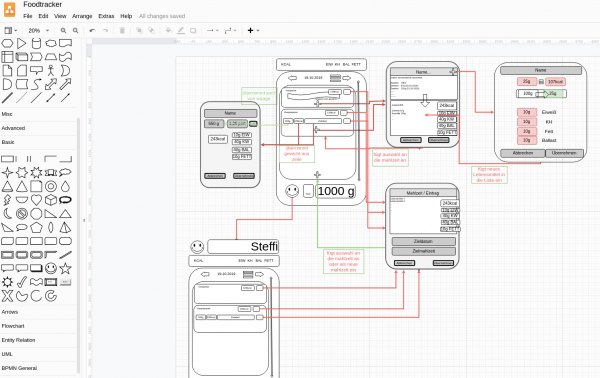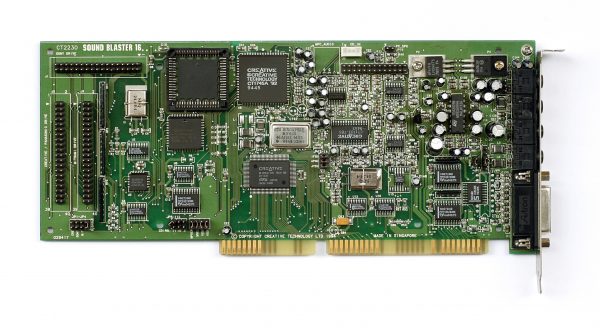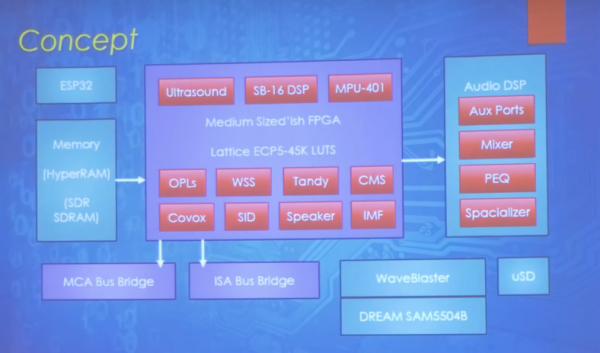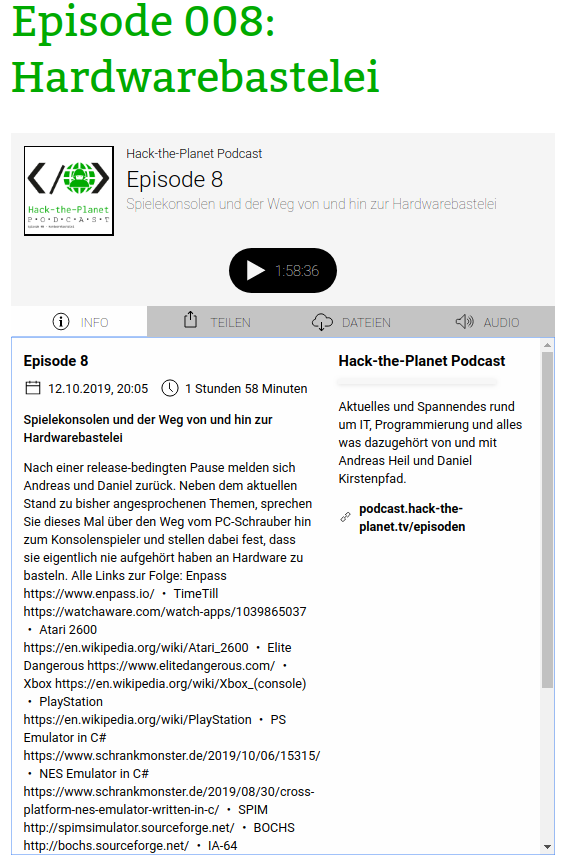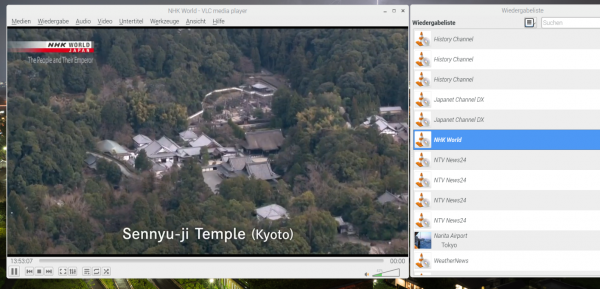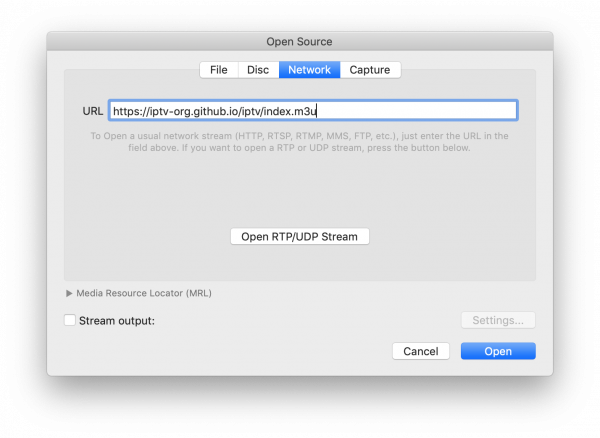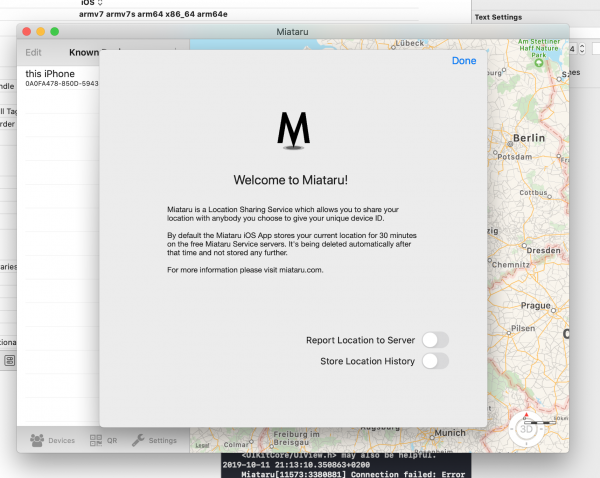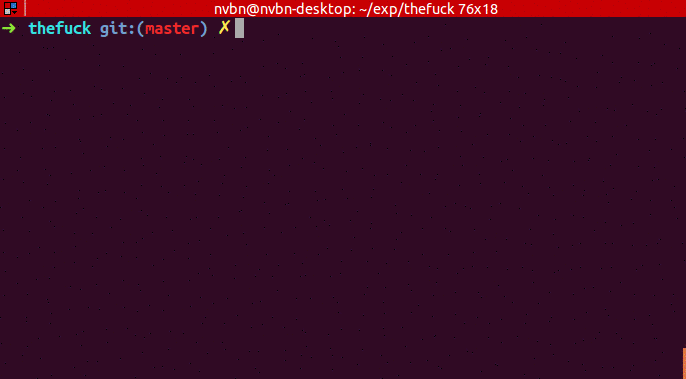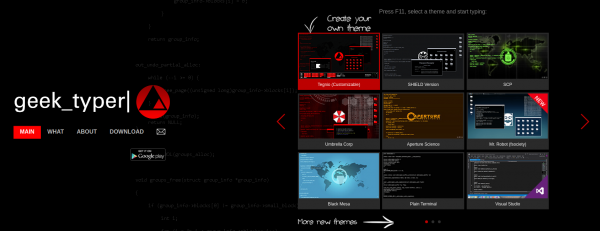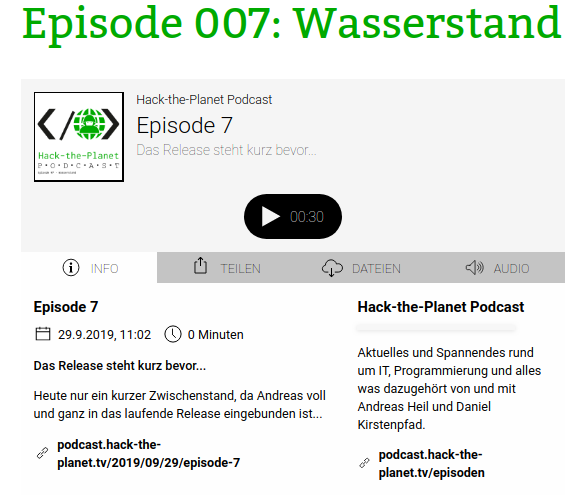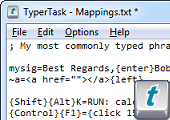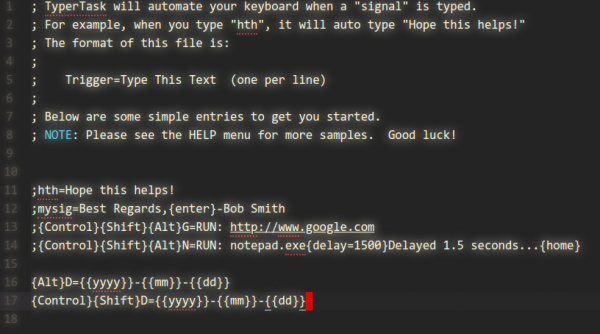Boomtime 5 Aftermath: The Apostle Malaclypse the Elder’s Holyday. A wandering Wiseman of Ancient Mediterrania (“Med-Terra” or middle earth), who followed a 5-pointed Star through the alleys of Rome, Damascus, Baghdad, Jerusalem, Mecca and Cairo, bearing a sign that seemed to read “DOOM”. (This is a misunderstanding. The sign actually read “DUMB”.)
Mini 3D Tokyo Metro Map
Somebody made a live tracking 3D map of a big portion of Tokyos public transportation system:
Of course also available in 2D.
Hack-The-Planet Podcast: Episode 009
- Folge mit Miataru HTP001: https://podcast.hack-the-planet.tv/2019/08/09/episode-0/
- Miataru http://miataru.com
- MyFitnessPal https://www.myfitnesspal.com
- New File Menu https://try-catch-finally.net/2019/09/24/easy-file-menu-for-macos/
- Xerox Star https://en.wikipedia.org/wiki/Xerox_Star
- Musashikosugi Typhoon Fotos → https://photos.app.goo.gl/56VtqNNP9unjzQw29
- Emperor Japan Parade https://www.keishicho.metro.tokyo.jp/kotsu/doro/regulation/ceremony_kisei.files/chirashi_e.pdf
- Tokyo Stadtnamen in iOS ersetzen:
- https://www.schrankmonster.de/2019/09/06/text-replacements-for-tokyo-ward-and-kens-on-ios-and-macos/
- TypeTasker Text Replacement: https://www.schrankmonster.de/2019/09/24/simple-windows-text-expander/
- Cherry G80-3000 https://www.cherry.de/cherry-g80-3000.html
- DasKeyboard: https://www.schrankmonster.de/2012/08/04/daskeyboard/
- DasKeyboard: https://www.daskeyboard.com/
- Kosugi Festa 2019: http://kosugifesta.com/
- Wireless Mac Keyboard von damals: https://geekhack.org/index.php?topic=6528.0
- Synology https://www.synology.com/de-de
- Prusa Mini 3D Drucker – https://www.prusa3d.com/original-prusa-mini/
- OSS Extruder: https://www.sciencedirect.com/science/article/pii/S2468067218300208
- MyFitnesspal selbst bauen: https://www.schrankmonster.de/2019/10/19/replacing-myfitnesspal/
- Public REST API https://www.hack-the-planet.net/2019/09/02/public-rest-apis/
- Swift Programming Language: https://docs.swift.org/swift-book/
- SwiftUI https://developer.apple.com/xcode/swiftui/
- HUD https://www.schrankmonster.de/2019/02/09/head-up-display-esthetics/
- HealthPost https://apps.apple.com/de/app/health-post/id1441893550?l=en
- FHIR https://en.wikipedia.org/wiki/Fast_Healthcare_Interoperability_Resources
- RaspberryPi https://www.raspberrypi.org/forums/viewtopic.php?p=1252786#p1252786
- https://www.raspberrypi.org/documentation/configuration/warning-icons.md
- XNA – XNA’s not acronymed https://en.wikipedia.org/wiki/Microsoft_XNA
- RISC-V https://youtu.be/67KW4t42SZk
- Unicode https://en.wikipedia.org/wiki/Unicode
TIL: iPhone Visual Voicemal is IMAP
Today I learned that the Apple iPhone re-purposes the IMAP protocol to implement the voice mail feature.
By sniffing the network traffic it was possible to examine the IMAP protocol revealing username and the corresponding hashed password (which allows to repeat a successful login) and of course all voicemail files. We want to highlight, that all the voicemail files have been transferred unencrypted.
Assessment of Visual Voicemail from 2012
replacing MyFitnessPal
Well, it’s about time to do something about MyFitnessPal. In our family we’re using their service by the daily. But just for logging. No reports, no further features used.
But still, we were using it for quite a time now:

The service has started to roll out ads for some time now in their apps. There are only iOS / Android apps available. And a mediocre website.
Just recently they started to announce that their free service will restrict how many years back are going to be stored. From those 5 years we will loose 3.
In addition the whole integration has never gotten to a point where I would have decided to upgrade to the paid premium version. No functionality ever got added. No interfacing with scales, no optimizations for UI/UX, …
But they now reduce the functionalities and service and want me to cough up a bit of money:

I am not generally against subscriptions. But I am not getting 9,99 Euro of value out of the service. A shared google sheet would almost achieve parity. And the price itself is just not value based. For 2 Euro I probably would not feel the urge to move on. For 9,99 (times 2 for 2 accounts) make me move.
So I’ve sat down with my wife and we scribbled up some things we want to have in a replacement. The content and feature-set is agreed. Now I’ll throw up a prototype app.
It’ll be integrated with the MQTT scales. And with the flow we came up with we hopefully will reduce the interactions dramatically over MyFitnessPal. And it’ll never stop saving history. And I’ll learn something new.
Celebrate Bureye
The 73rd and Last Day of the Season of Bureaucracy. Eye Day is celebrated by playing Discordian Games.
ASCII browser games
A lot is going on in browsers these days. They are becoming increasingly powerful and resource-demanding.
So it just feels natural to combine high resource usage infrastructure with low resource using graphics to get the worst of both worlds.
Not quite, but you get the idea.
There’s a guy on the internet (haha) who dedicates time to write ASCII / character based graphics engines and games with it.
Meet MrGumix:
Of course, what’s that games and graphics?
Exhibit #1:
And the more advanced Exhibit #2:
One Soundcard to rule them all
The first sound card I got as an upgrade to a PC without sound back in 90s was the glorious Sound Blaster 16:
There were several different sound card options back in the days and all sounded a bit different.
A sound card (also known as an audio card) is an internal expansion card that provides input and output of audio signals to and from a computer under control of computer programs. The term sound card is also applied to external audio interfaces used for professional audio applications.
Wikipedia
With the synthesizers and audio processing each series and make produced a distinctive sound. Some of us want to bring these sounds back. But keeping the (old) hardware running is an increasingly difficult task.
For example: The interface used by the above mentioned Sound Blaster 16 card is the ISA bus interface. This interface was introduced in 1981 and replaced in 1993. If you want to hear how such a sound card sounds today you would have to run hardware from this time period.
But some people are working towards getting at least some authentic sound back.
In this talk, Alan Hightower takes a look at the complexities, challenges, and even current progress at integrating all of the above cores into one FPGA based ISA sound card.
This is what the concept would bring if done:
Oh that would be soooooo nice to have all these vintage sound interfaces available and to be able to actually use them for audio output.
Hack-The-Planet Podcast: Episode 008
Remember Habeas Corpus day
Setting Orange 66 Bureaucracy: A Discordian Holy Day of Fondle and Gropage, when all Discordians should grab their Legislative Representatives by the goolies and cry out “Where’s my Bill of Rights, you bastard?!”
On this day in 3025 YOLD (12 October 1859 AD), His Imperial Majesty, Emperor Norton I, Emperor of the United States and Protector of Mexico, ordered the Congress of the United States to dissolve.
“Fraud and corruption prevent a fair and proper expression of the public voice; that open violation of the laws are constantly occurring, caused by mobs, parties, factions and undue influence of political sects; that the citizen has not that protection of person and property which he is entitled.”
Habeas Corpus Day
a source of iptv streams
Collection of 8000+ publicly available IPTV channels from all over the world.
Internet Protocol television (IPTV) is the delivery of television content over Internet Protocol (IP) networks.
Github: iptv-org/iptv
Using the streams is as simple as it gets: Just open the provided playlilst files in your favorite media player. The above example is th VLC media player.
ohai Miataru on macOS
Apparently it’s quite simple to turn an iPad app into an macOS app…
global QR code scavenger hunt
I like location based stuff. I like QR codes. There is something that combines both.
Meet Munzee:
Munzee is the next generation in global scavenger hunt games.
Track down QR Codes hidden in the real world and capture them for points. Whether you are a casual player, an avid explorer, or a hardcore competition enthusiast, Munzee helps you rediscover the world around you.
more blacker
A month ago I wrote about a very black paint. This month brings me a papepr about an even blacker substance.
The synergistically incorporated CNT–metal hierarchical architectures offer record-high broadband optical absorption with excellent electrical and structural properties as well as industrial-scale producibility.
Paper: Breakdown of Native Oxide Enables Multifunctional, Free-Form Carbon Nanotube–Metal Hierarchical Architectures
Magnificent app which corrects your previous console command
We all know this. You typed a loooong line of commands in your shell and you made one typo.
That’s the worst.
Now. There’s a command that aims to help:
It is rather simple. But extremely effective.
The Fuck attempts to match the previous command with a rule. If a match is found, a new command is created using the matched rule and executed.
Grab it on github. Install it right away. It went into my toolbelt in an instant.
Why the MS-DOS floppy disk cache was valid 2 seconds…
If you’re old enough to have used MS-DOS you know the benefits a read cache introduced back at the time for floppy disks. Without such a cache everything data intensive was magnitudes slower.
Now after all these years more and more stories emerge about how certain thresholds and timeings where set back in the days.
This is such a story:
Mark Zbikowski led the MS-DOS 2.0 project, and he sat down with a stopwatch while Aaron Reynolds and Chris Peters tried to swap floppy disks on an IBM PC as fast as they could.
They couldn’t do it under two seconds.
So the MS-DOS cache validity was set to two seconds. If two disk accesses occurred within two seconds of each other, the second one would assume that the cached values were still good.
Raymond Chen blog
There are more links in the original article – so go there and down that rabbit hole!
Experimental Audio Tool: SuperCollider
SuperCollider is a platform for audio synthesis and algorithmic composition, used by musicians, artists, and researchers working with sound. It is free and open source software available for Windows, macOS, and Linux.
SuperCollider features three major components:
scsynth, a real-time audio server, forms the core of the platform. It features 400+ unit generators (“UGens”) for analysis, synthesis, and processing.
sclang, an interpreted programming language. It is focused on sound, but not limited to any specific domain. sclang controls scsynth via Open Sound Control.
scide is an editor for sclang with an integrated help system.
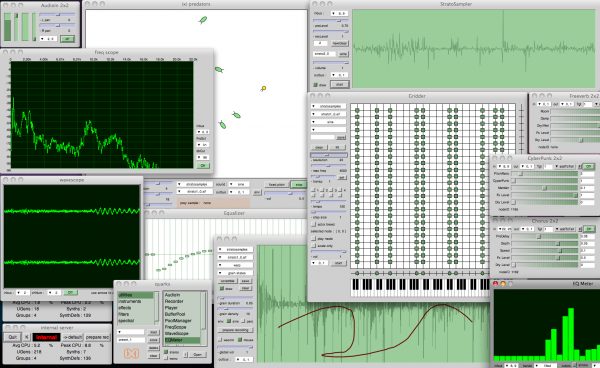
type like you’re a movie hack0r
HACK LIKE A PROGRAMMER IN MOVIES AND GAMES!
GeekTyper was inspired by the various media where hacking is usually portrayed incorrectly.
Simply randomly mash your keyboard and code will be simulated on your screen.
This is hilarious! :-) I’ve had way to much fun poking keys while trying it out…
Of course there’s also a screensaver that you can install. Recommended for office use. Not recommended on airplanes and other public spaces.
I’ve just checked with a real person. I’ve used the Visual Studio skin and typed away. Oh the aww.
For those on macOS:
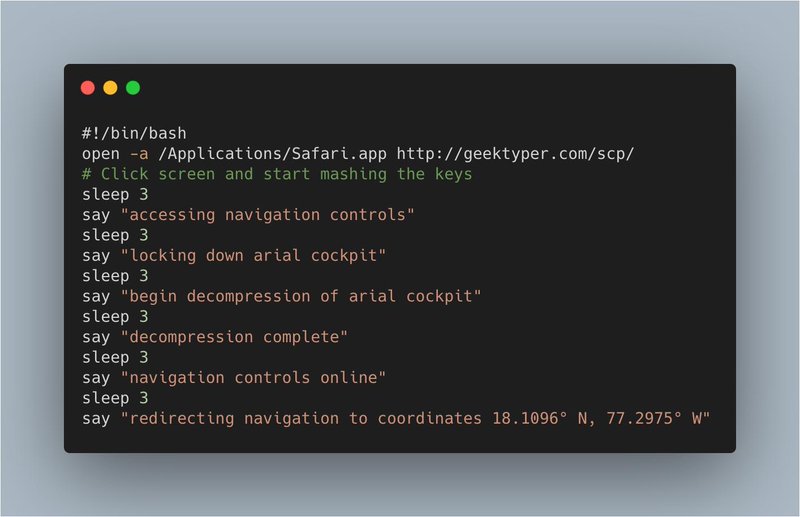
Hack-The-Planet Podcast: Episode 007
good wireguard tutorial
If you, like me, are looking into new emerging tools and technologies you might also look at Wireguard.
WireGuard® is an extremely simple yet fast and modern VPN that utilizes state-of-the-art cryptography. It aims to be faster, simpler, leaner, and more useful than IPsec, while avoiding the massive headache. It intends to be considerably more performant than OpenVPN. WireGuard is designed as a general purpose VPN for running on embedded interfaces and super computers alike, fit for many different circumstances. Initially released for the Linux kernel, it is now cross-platform (Windows, macOS, BSD, iOS, Android) and widely deployable. It is currently under heavy development, but already it might be regarded as the most secure, easiest to use, and simplest VPN solution in the industry.
bold wireguard website statement
To apply and get started with WireGuard on Linux and iOS I’ve used the very nice tutorial of Graham Stevens: WireGuard Setup Guide for iOS.
This guide will walk you through how to setup WireGuard in a way that all your client outgoing traffic will be routed via another machine (server). This is ideal for situations where you don’t trust the local network (public or coffee shop wifi) and wish to encrypt all your traffic to a server you trust, before routing it to the Internet.
WireGuard Setup Guide for iOS.
Expect the Aftermath
The 50th Day of the Season of Bureaucracy. The Fluxday marking the approach of the Season of The Aftermath.
Aftermath (season)
Simple Windows Text Expander
If you, like me, once every while need to type the same again and again it might also get tired for you as it got for me.
A specific example: I very frequently need to have the current date available to be entered.
May it be because I need to name a file correctly, prepending it with the current date, or because I need it to refer to a specific date in a text I am currently typing.
The common scheme for dates I am using is YYYY-MM-DD. The 24th of September 2019 becomes 2019-09-24.
For when I am on Windows I am using a small utility called “TyperTask” to have a system wide shortcut available to me that will enter the current date with the press of a button.
As you can see in the screenshot above. By simply adding / editing the TXT file you will be able to specify new shortcuts. In the above case ALT+D or STRG+SHIFT+D will generated my desired date text pattern.
It’s freeware. It’s from a company that ceased to exist. It’s 60kbyte. Download while supply lasts.
Multi-Sensor board progress
Still working on these…
Still lots of errors and challenges to positioning and casing. It works electrically and in software. Does not yet fit into a case.
It’s supposed to get you these sensors accomodated:
- barometric pressure
- temperature
- humidity
- PIR motion
- light intensity
- bluetooth scan/BLE connectivity
- Wifi scan / Wifi connectivity
And a RGB LED as output. All powered by USB and an ESP32.


Dark Mode
As iOS 13 has introduced a system wide dark mode into my workflow I had a good reason to give the CSS of this website a little spin.
Depending on your system settings this website now supports Dark Mode.
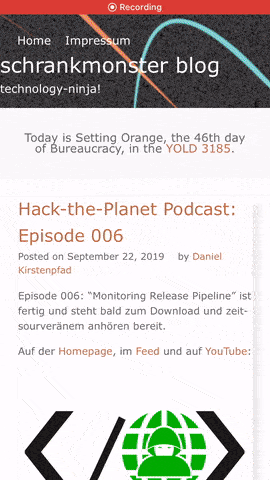
Hack-the-Planet Podcast: Episode 006
Episode 006: “Monitoring Release Pipeline” ist fertig und steht bald zum Download und zeit-sourveränem anhören bereit.
Auf der Homepage, im Feed und auf YouTube:
Diesmal unterhält Andreas sich mit mir über:
- Traefik: https://traefik.io/
- Drive In Briefkästen: https://twitter.com/aheil/status/1173…
- Automated Konbini: https://www.forbes.com/sites/akikokat…
- Neue Packstationen: https://www.golem.de/news/deutsche-po…
- Arduino Aquarium Futter Automat: https://www.schrankmonster.de/2019/09…
- Louis Rossmann Macbook Repairs: https://www.youtube.com/user/rossmann…
- Make Buch: https://www.dpunkt.de/buecher/12488/9…
- Icinga: www.icinga.com
- SONOS Auto Bookmarker: https://github.com/bietiekay/sonos-au…
- TOTP – Time based one-time password: https://en.wikipedia.org/wiki/Time-ba…
- 1Password: https://1password.com/
- Enpass: https://www.enpass.io/
- ODroid GO: https://wiki.odroid.com/odroid_go/odr…
- ODroid Go: https://www.hardkernel.com/shop/odroi…


